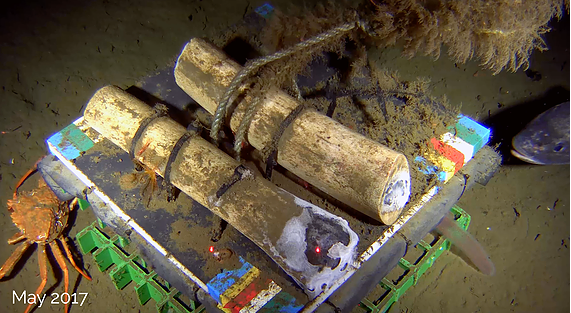SubC Stories: Whale Bone Study Continues in Barkley Canyon with Subsea Camera Observatory
Monitoring how benthic organisms utilize the sparse food resources available in deep-sea settings
Permanent presence on the seafloor allowing for long-term observation
Thanks to SubC Imaging’s Observatory System, researchers are able to establish large-scale patterns of biodiversity and ecosystem function
Led by Professor Craig Smith (University of Hawaii at Manoa), Professor Lisa Levin (Scripps Institution of Oceanography), and Dr. Fabio De Leo (Ocean Networks Canada), the University of Victoria have been using SubC’s Observatory Solution for their underwater study in Barkley Canyon since 2014.
In May 2014, three humpback whale (Megaptera novaeangliae) rib sections, one 20x20x10 block of Douglas Fir (Pseudotsunga meniziesi), and a ~ 30x30x30 block of authigenic carbonate were placed at a depth of 890m inside the Barkley Canyon -- a site at Ocean Networks Canada NEPTUNE subsea camera observatory. The purpose of this scientific experiment is to monitor the changes triggered by the implantation of various organic and inorganic substrates as well as monitor how benthic organisms utilize the sparse food resources available in deepsea settings.
Full Control of Deep-Sea Observations
**巴克利峽谷延時視頻中顯示的素材來自維多利亞大學升級為專案一部分的新一代 SubC 智慧攝像機。
每兩個小時,自主的海底攝像機和LED在三個基板上平移,在保持其位置一分鐘時,每個基板拍攝5分鐘的視頻。
"這是我們第一次能夠控制我們在深水中的觀測結果,每天每兩小時記錄一次實驗,並隨時打開燈進行進一步觀測 • 法比奧·德利奧博士
Cost Efficient, Long-Term Observation
Setting up a cabled ocean observatory created a permanent presence on the seafloor allowing for long-term observation. This also eliminated the need for costly, more time-consuming monitoring via multiple deployments of ROVs or AUVs in order to gather the data. With the help of the Observatory Solution, the researchers are able to establish large-scale patterns of biodiversity and ecosystem function in areas where there are whale bones.
引用
引文: 德利奧, 法比奧和史密斯, 克雷格 R. 和萊文, 麗莎和弗勒里, 阿哈龍 (2016) 。早期底膜繼承過程在巴克利海底峽谷的植入基板受永久氧氣最社區的影響 ,美國地球物理聯盟2016年。圍碼: 2016AGUOSME34B0796C
巴克利峽谷有機富饒的鯨骨和木瀑布棲息地的生物多樣性、連通性和生態系統功能
https://www.oceannetworks.ca/whalebone-experiment-minimum-oxygen-zone
https://www.oceannetworks.ca/researcher-residence-craig-smith-whale-falls

